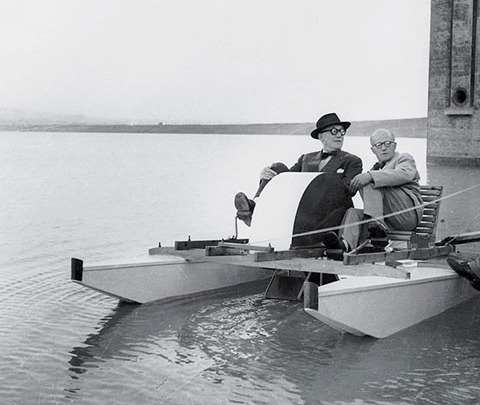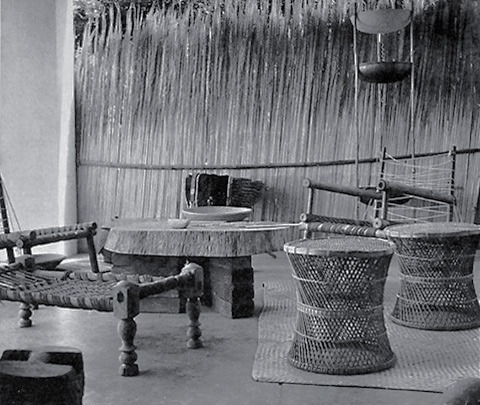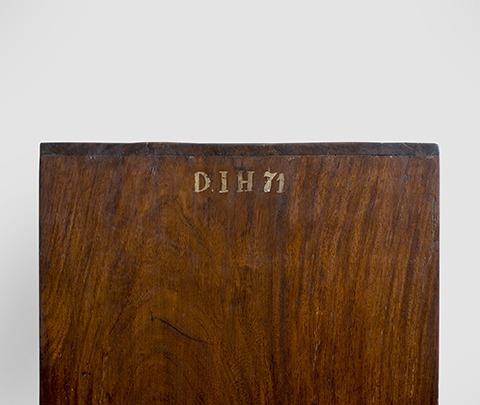
Pierre Jeanneret and Chandigarh
Pierre Jeanneret was born in 1896 and opened an atelier with his cousin Edouard Jeanneret (Le Corbusier). Together they designed the most famous buildings of the 20th century like the Villa Savoye, the house Clarté or the Pavillon Suisse in Paris. This productive cooperation ended with the Second World War, when Le Corbusier decided to support the Vichy regime and Pierre decided to work with the Resistance.
In 1955 they united again for the new capital of Chandigarh in India and started to design a visionary city. Le Corbusier soon decided to leave the project to others, but Pierre stayed there for another 15 years and worked as chief architect on architecture and furniture design. Removed from Le Corbusier and European modernity Pierre Jeanneret found the opportunity to make experiments with low-budget materials and to develop techniques and architectural expression, more suited to India.
He mixed the modern spirit of the western World with the rural spirit of the Indian craftsman’s work and created a language that was both archaic and modern. He designed all details and created an iconic unity of landscape, architecture and furniture.

The character of the furniture
In 1955 India had little industrialisation. Thus, Pierre Jeanneret started to create a modern spirit by adapting his design to Indian traditional handcraft. He worked with local materials like teak and cane and used simple technologies to produce the furniture. It turned out to be an adventurous challenge, where simplicity created a new expression of modernity. But his design didn’t arise out of hardship. It was the joy of using simple materials to check out all possibilities. He designed many prototypes and he loved to create dismountable and light furniture pieces. So we get intelligent items, showing a playful virtuosity, made with simple means. But more important for him was to celebrate the complexity of an ascetic life.
His design approach was less formal than ideological, trying to find the idea of freedom, luck, joy, and making them part of life. So today those furniture pieces still express an essential and eternal depth, which touch us deeply.

Authenticity
You are buying a valuable collector piece, so it’s not all about shape. Authenticity is an essential component. So, it’s worth choosing a gallery with a wealth of experience and an impeccable reputation.
There are more and more completely fake or semi-authentic objects offered. Some wooden parts are new, made with old wooden boards or taken from other damaged, authentic Chandigarh objects. We don’t offer that. We want each wooden part to be originally from that Mid-Century piece. There are even some Chandigarh objects, which are not in catalogues, but from Chandigarh. They are perhaps authentic, but may not be designed by Pierre Jeanneret or Le Corbusier. So, we don’t offer those either. We take our business very seriously. More information.
Pierre jeanneret from Chandigarh and Le Corbusier were born in La Chaux-de-Fonds, Switzerland. He died in 1965 in Roquebrune, France. Actually his real name was Charles-Edouard Jeanneret-Gris. He was an also architect, theorist of architecture, draftsman, sculptor and furniture designer. Charlotte Perriand did a great forme libre table for that team. Shee was one of the most influential architects of the twentieth century, whose new ideas have also been controversial and some are still controversial until now. He got his pseudonym Le Corbusier, based on the name of his great-grandmother Le corbusier. Also a raven for the first time in the newspaper L’Esprit new 1920.
Pierre Jeanneret chair und Le Corbusier stool are finally architecture. The chair is an iconic piece of design.
Charles Jeanneret came from a long-established and widely ramified family, their origins – but not proven – origins back to the some areas. The addition Gris distinguishes its family branch from the Jeanneret-Grieurin. His father was an enameller of watch. He cases with his own workshop in La Chaux-de-Fonds: It is also the former center of the Swiss watch industry. His mother Marie-Charlotte-Amelie was a musician.
So in 1900 he began an apprenticeship finally as engraver and engraver. He did that at the École d’Art School of Arts in La Chaux-de-Fonds. Under the influence of his teacher Charles L’Éplattenier, he turned to painting and architecture, initially leaning more towards the former. Artistically, he was at that time heavily influenced by the Arts and Crafts Movement and Art Nouveau. That was a great time for them. Our gallery sells just masterpieces of great design. Furniture and chairs are also easy to sell. That has design made a chair.
pierre jeanneret chair and charlotte perriand table
Pierre Jeanneret furnitureThe history of that architectural design pieces is quit impressive. Finally that pieces has been created for a complete architectural vision. That made the remarkable project really rare. Together with Le Corbusier a very rare opportunity has got its expression.
